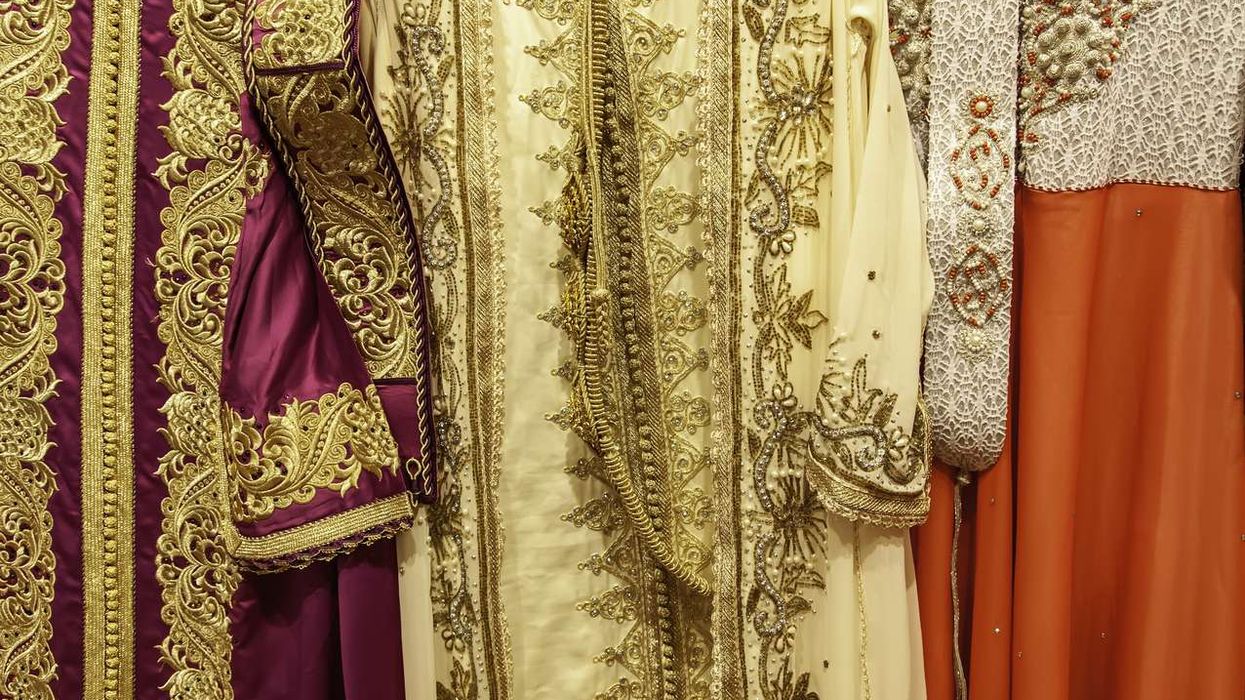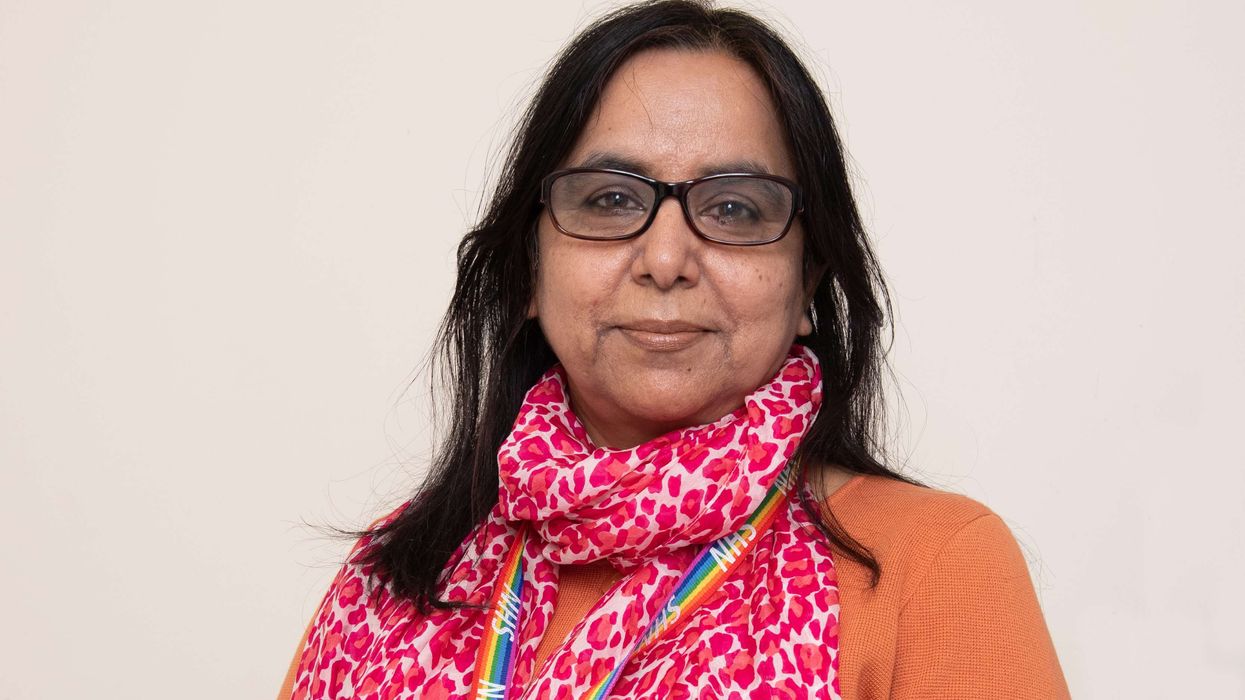Suppose your coffee break doesn't merely take you out of work mode—it takes you out of the century. Welcome to the Time Librarians' Lounge, where every break in a work shift can deposit you in a Roman atrium, a Martian greenhouse, or a quantum crystal chamber. These aren't your typical staff rooms. They're carefully curated sanctuaries for time guardians—intended to allow them to relax, recharge, and temporarily forget the weight of keeping history intact over millennia.
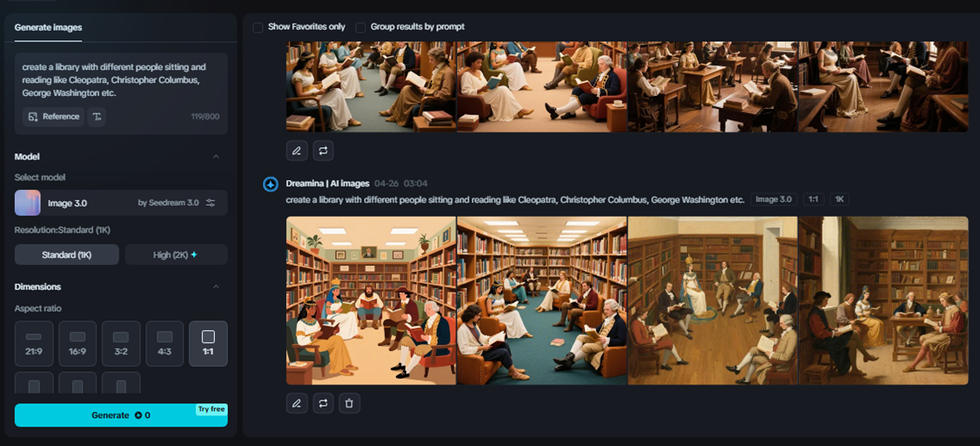
Here, lounges are pieced together by threads of time. They're adorned by fashions that don't simply cut across timespaces—they merge them. Visualize steampunk coffee houses alongside Zen-like teleportation rooms, or Egyptian sunlit niches lined up with energy domes from the future. These are spaces where Cleopatra's chaise longue can be found alongside a holographic jukebox playing Beethoven reimagined by synthwave. And with Dreamina's AI image generator, you don't require a time machine to construct it—you require imagination, images, and some clever tools.
Where time-travelers sip and reset
Each Time Librarian requires a space where they can reflect, whether having just returned from 1890s Vienna or coming back from a mission to spy on some civilization in the year 4012. Their break rooms should not be attached to any period or style. These lounges need to have the feel of pockets of everywhere and nowhere—a pause button on the universal timeline.
There might be minimalist versions with nods to Japanese tea houses but subtle implications of robot staff. Others could be maximalist: constellation-coated ceilings, shelves lined with long-lost civilizations' texts, and machines vending treats from alternate realities. These lounges don't involve maintaining a fidelity to a design aesthetic. They're about cross-mingling comfort, wonder, and chrono-diplomacy of styles.
How, then, do we give life to these lounges—design and artwise? Dreamina presents a spectacular sandbox to do it in.
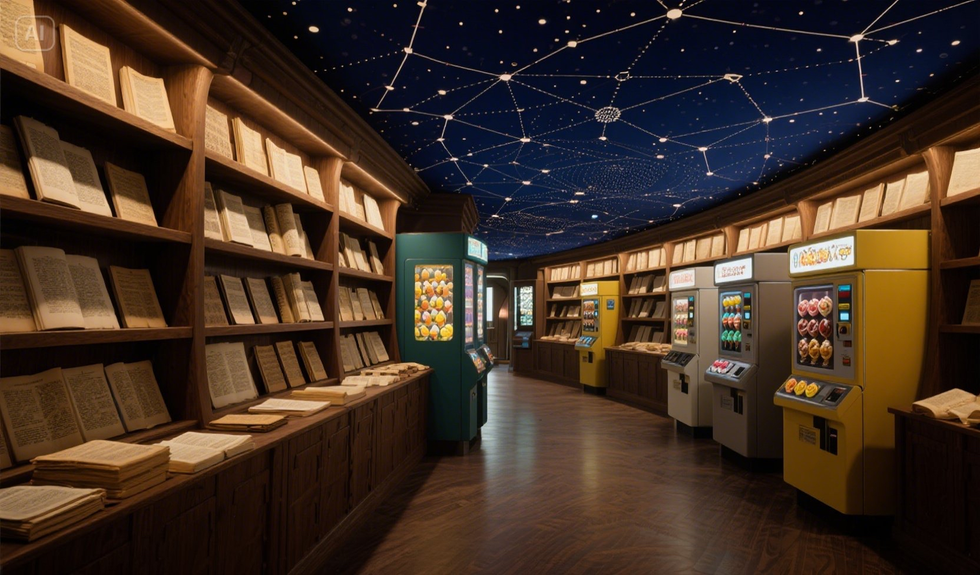
Relaxation turned into relics
These Time Librarians' Lounges are not merely design exercises but artifacts. They each reveal a story about how individuals stop, think, and indulge regardless of the time period. And now that you've incarnated them, what do you do with them?
Think about taking your favorite lounge designs and turning them into a series of digital collectibles. From floating meditation mats to chronos-consoles, these pieces can be standalone art objects. If you'd like to tote them around or gift them as badges of temporal cool, turn them into physical works of art via a sticker maker. Upload your Dreamina pictures and print out holographic sticker sheets packed with teacups from 3020, sundial-shaped chairs, and lunar-phase dimming chandeliers. They're cool, sci-fi mementos from nonexistent break rooms—break rooms they should have had.
How to generate images with Dreamina
Before furniture is rearranged in space-time, it begins with one thing: an idea. Or better yet, a precise visual prompt. This is where Dreamina comes in to transform timelines into texture.
Step 1: Create a rich text prompt
To start, go to the "Image generator" tab on Dreamina. This is where the blueprint of your break room is created. You’ll need to craft a prompt that doesn’t just describe the space but evokes it. Think beyond appearance—capture mood, light, emotion, and purpose. For instance, a prompt like “an interdimensional break room with Art Deco lighting, ancient scrolls, kinetic furniture from the future, and a transparent wall showing shifting galaxies” can spark incredible results. Add sensory details like temperature, materials, or sound to breathe more life into it. This is where your Time Librarians will begin to seem very real.
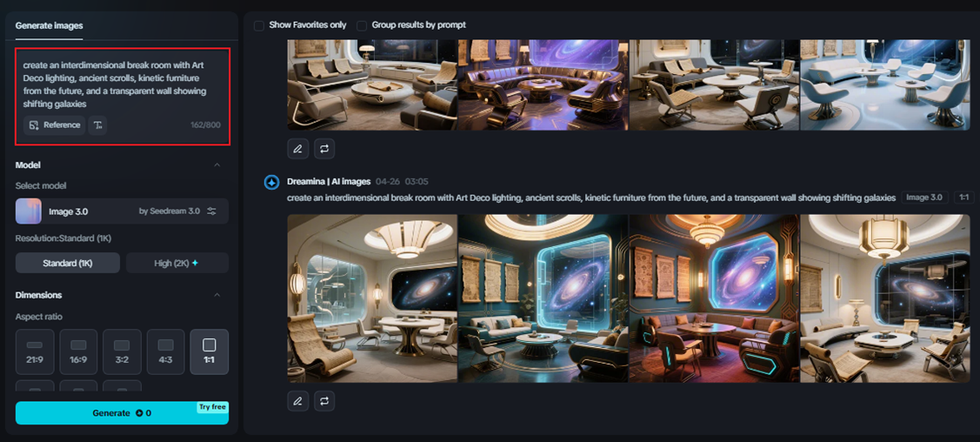
Step 2: Tune parameters and render
Having set your prompt, it's now time to dial in Dreamina's visual knobs. Select a model suited to your intent: maybe you'll go for a painterly feel for a more fantastical lounge or high-definition, photorealistic model for a space that's real to the touch and the eye. Then choose your aspect ratio—wide if you're imagining expansive, panoramic areas, or square when you're thinking about collectible sticker sheets or plush areas. Select your image size and resolution based on how much detail you desire. Once everything feels perfect, click "Generate," and your temporal break room will pop into existence in seconds.

Step 3: Customize and download
After your image is created, it's time to shape it even more. Employ the inpaint tool from Dreamina to add a temporal kettle onto an aged marble counter, or expand the borders of your lounge to expose more timelines and furnishings. Want to erase an eye-jarring detail? Employ the remove tool to tidy it up. Retouch enables you to tweak lighting, textures, and highlights until it emits both coziness and anachronism. Once you’re satisfied—once the chaise longue from Atlantis and the glowing tea pods from Pluto harmonize perfectly—click the “Download” icon and save your masterpiece. You’ve now captured a quiet corner of infinity.
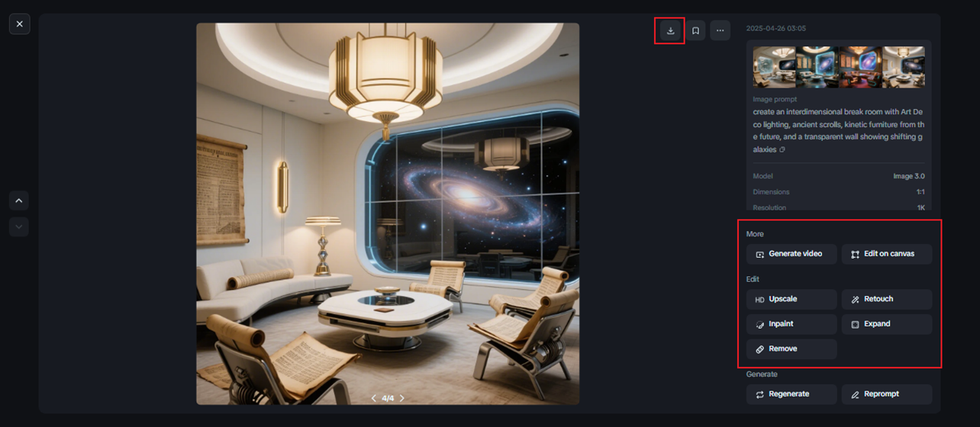
Designing identity beyond time
Suppose your designs take off—you launch a zine, share it on social media, or create a web gallery for hypothetical rest stops for travelers through time. What you require next is an emblem—a that defines this genre-crossing idea of pause and being present. By employing Dreamina's AI logo generator, you can design a mark that blends hourglasses with neon spirals, or gears entwined in ivy, embodying both time's stiffness and the comfort of resisting it.

This logo won't simply brand your project—it'll ground your look. And as you blow out the possibilities of your Time Librarians universe into merch, story seeds, or virtual exhibitions, the logo will be a time-stamped badge for everything restful, warped, and radically creative.
No clock strikes too close to midnight
There is no one style of breaking out the break room that spans time. You can take inspiration from the past, fantasy, science fiction, or dreams. A lounge could have a jukebox that plays centuries non-sequentially. Another could include a garden filled with plants that have gone extinct alongside those in the future that are hybrids. You're not trending to design—you're writing a new one, a genre known as "temporal comfort."
These rooms aren't merely about couches and clocks. They're about what resting means when time has no distinct meaning. They're rooms where the weight of memory is tolerable, where history can be paused, and where design is as malleable as time itself.
So go ahead—make a pot of ancient-future tea, open Dreamina, and create a break room for the ages. The Time Librarians await.

